The Fuji X-E1:
Hey Everyone! I have with me here today the much anticipated Fuji X-E1! I must admit, when I first heard news that Fujifilm was going to make a cheaper alternative to the wonderful X-Pro1 (you can read my review), I had no plans to purchase one because I was completely content with my X-Pro1.
But like many photographers, and gear nuts out there, I began doing a little more research, which btw is usually bad for my wallet ;). For instance I read that the new Fuji X-E1 was going to have the same exact wonderful sensor as the X-Pro1 yet the body was actually going to be smaller than the X-Pro1. To top that off, the X-E1 was also going to come with a nice kit zoom (XF 18-55mm F2.8-4.0 R lens can be bought separately as well). The most important piece of news that I heard about the X-E1 was that it was going to cost just under a $1000, which means that it’s basically 40% cheaper than the X-Pro1! Best of all is that if you buy the X-E1 with the kit zoom, the whole package costs just under $1400. The kit zoom is $700 alone, which means that you can save $300 on the zoom if you buy the kit.
When Fuji released the X-Pro1, it was very well received but unfortunately, it was priced a bit higher than other competing mirrorless cameras. Fuji needed to do something about this so they created the X-E1, which is Fuji’s way to finally enter a more mainstream audience; an audience that was once ruled by the Sony’s, and the OM-D’s of the world. But a cheaper, smaller, faster camera with X-Pro1-like quality for under $1000? How is this even possible? Well, one thing you don’t have to worry about; the new Fuji X-E1 definitely came prepared because it is packing a lot of heat named X-Trans to do battle in the very competitive world of mirrorless cameras.
Fuji X-E1 Build Quality:
So let’s get down to this review, and to do that, we have to start talking about the build quality of the camera. So, how’s the Fuji X-E1 built? How does the X-E1 compare to the X-Pro1? Well, according to Fuji, the body of the X-E1 is about 30% smaller than it’s bigger brother. That doesn’t sound like much but trust me, it is in the real world. With the battery and memory card, the X-E1 weighs only 350 g.

↑ Front view of the Fuji X-E1.
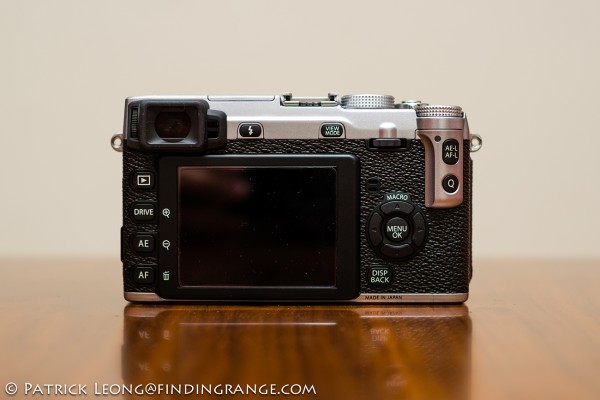
↑ Back view of the Fuji X-E1.
The Fuji X-E1 is a lot smaller than the X-Pro1, which makes it absolutely a perfect fit in my hands. While I love the X-Pro1, I have to admit that this is what I wanted Fuji to build in terms of size. Man, what a pleasure to use all day. The X-Pro1 is not a big camera but after a few days of using the X-E1, I went back to the X-Pro1 to try it out, and the X-E1 actually made it feel bulky. In fact, a better comparison would be between the X-E1, and the X100, since the X-E1 is actually a lot closer in size to the X100. With the XF 18mm F2.0 R lens attached, the X-E1 becomes an X100 on steroids albeit slightly bulkier. However, it also retains the same handy feel of the X100.
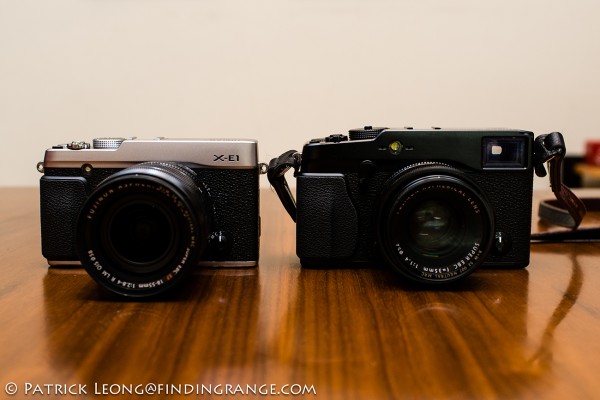
↑ Here’s a front view comparison between the X-E1 and the X-Pro1.
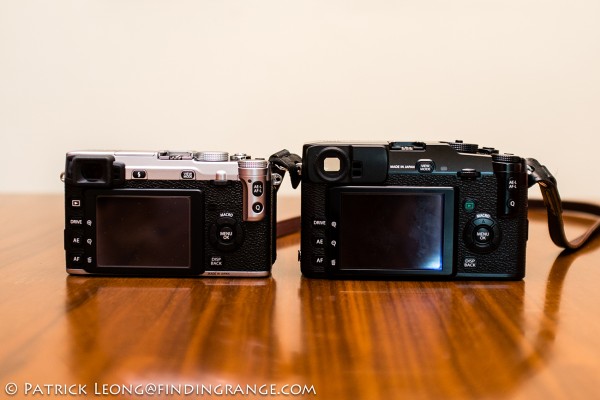
↑ Here’s a back view comparison between the X-E1 and the X-Pro1.
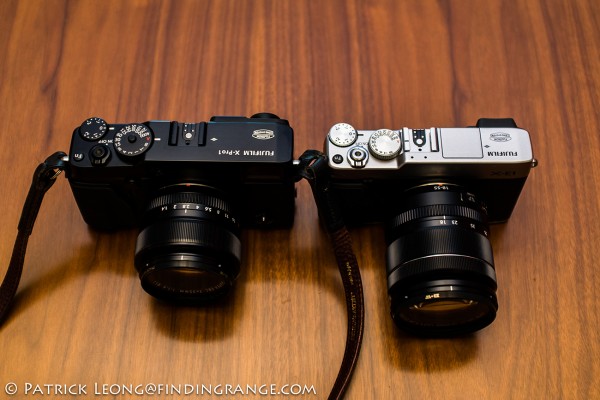
↑ Here’s a top view comparison between the X-E1 and the X-Pro1.
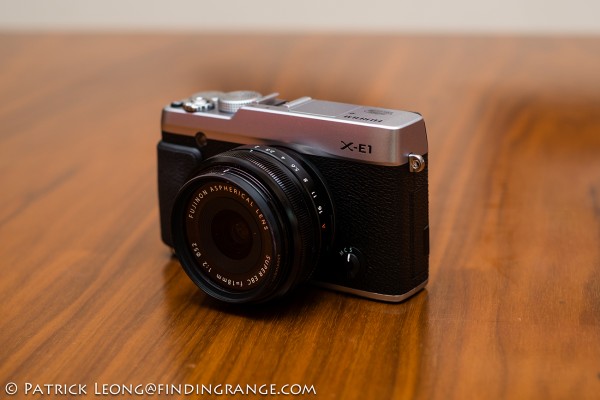
↑ The X-E1 with the XF 18mm F2.0 R lens make a great combo! Compact, powerful, fast, and unobtrusive! The 18mm also makes the X-E1 feel like an X100 in terms of size and feel.
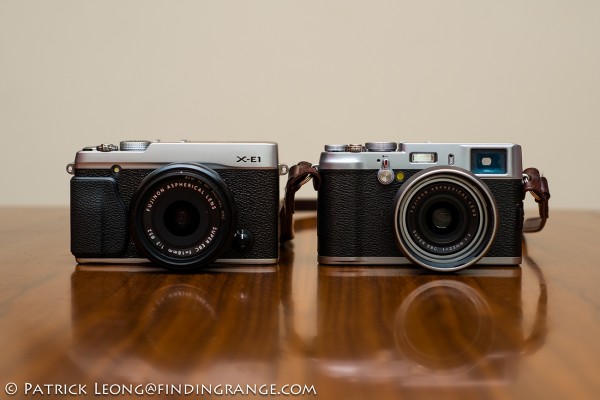
↑ Here’s a front view comparison between the X-E1 and the X100.
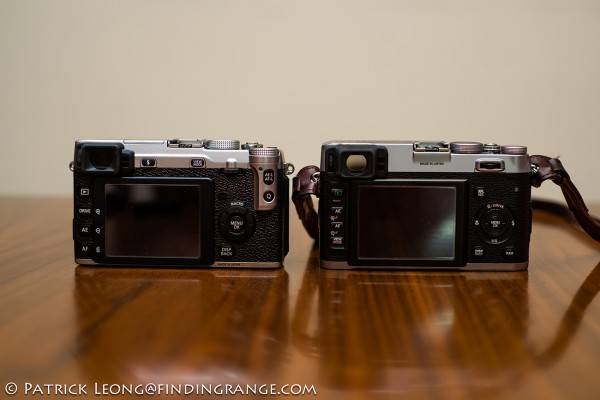
↑ Here’s a back view comparison between the X-E1 and the X100.
For you Leicaphiles out there, think of the Fuji X-E1 as a M6 pre-TTL or an M3 body, and think of the X-Pro1 as an M9 body because that’s how I think of it. The X-E1 has that really nice handy feel to it. It just feels so balanced, compact, and plain out portable making it very inconspicuous. People who are use to seeing DSLR’s won’t even treat you as a serious photographer, which is great in a public area. If you get a black one, you’ll probably just disappear into the crowd or at least feel like you do.
Speaking of color, the Fuji X-E1 comes in two: black and silver. I purchased the silver one, which Fuji says is “perfect for the younger generation”. I guess that makes sense since I’m not that old ;). The black X-E1 is more stealth but I always buy silver Leicas, and never really had that much of an issue in terms of being conspicuous. I couldn’t resist the silver X-E1, and I have no regrets with choosing this color. To me, the silver X-E1 is one beautiful looking camera, even more so than the photos suggest.
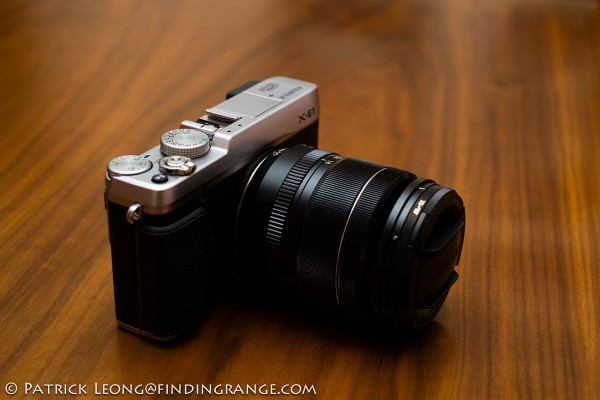
↑ The X-E1 with the XF 18-55mm F2.8-4 R lens combo.
So, the Fuji X-E1 is smaller, handier, and it looks better than the X-Pro1 yet it costs a whopping 40% less. What is missing from this camera? Well, here are some of the ways in which Fuji saved you some cash: for one, you don’t get an optical viewfinder (OVF). You also get a smaller LCD screen, which I think is actually from the X100.
Let’s talk about the LCD screen for a second. It is a 2.8 inch, 460,000 dot screen instead of a 3 inch, 960,000 dot screen that is found on the Fuji X-Pro1. Plus again, it is a screen that I believe comes from the X100 bin. Oh no, this spells the end of the world lol! In all seriousness, there are a few who find this as a big negative but no one really complained about it on the X100, so why is it so bad that it’s on the X-E1? In practice, it really doesn’t feel like I’m missing much from the X-Pro1’s screen. Seriously, I compared the two side by side just the other day. On the X-E1’s screen, I could still zoom in, check out the details in my shots, and it works perfectly fine for both live view, and menu functions. It’s vivid, bright, colorful, and the size of the screen is also perfect considering how much smaller it is when compared to the X-Pro1.
Yes, there are competitors that definitely have better LCD screens but most people who are going to buy a Fuji X-E1, an X-Pro1, an X100 or even an M9, are more concerned with the manual functions of the camera, rangefinder feel (in the case of the M9, it really is a rangefinder), and it’s overall image quality rather than if a screen is 2.8 inches instead of 3. At least, this is how I feel. I bought this camera along with my X-Pro1 because it offers amazing image quality, but also gives me all the manual controls, and functions that I grew up with during the film days. I like to be in total control of my camera, and the shots that I want to take, and for this price range, that kind of camera is extremely hard to find if non-existent.
This is a quality product solely designed for a photographer who likes to get his hands dirty. The build is excellent, and it is definitely at the top tier of its class, especially in terms of image quality. This means no loose parts, no creaks or signs of inferior craftsmanship. The shutter speed dial is tight and secure, even though it does not come with the lock button (which I personally prefer) like the Fuji X-Pro1. For those who worry about the lack of a lock button, my Leicas don’t have lock buttons, and I have never accidentally moved the shutter speed dial before.
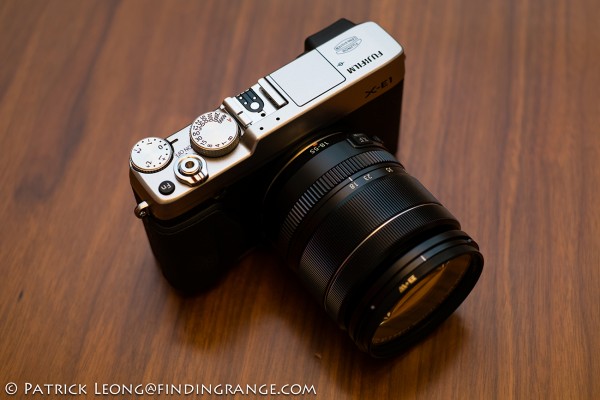
↑ One of the great features of the X-E1 is that it offers full manual controls just like the X100, and the X-Pro1.
The exposure compensation dial on the other hand is something that maybe Fuji should put a lock on. Maybe in the future, they could put a guard there or something because like the X-100, and the X-Pro1, it is too easily moved.
Fuji X-E1 Build Quality Comparisons vs. Fuji X-Pro1:
So again, overall, the build quality of this camera is what I have come to expect from Fuji. When compared to the X-Pro1, I would say that the X-Pro1 has a more solid or confident feel to it. This could be because the X-Pro1’s entire body is made out of magnesium where as only the top and bottom plate of the X-E1 are made from this material. The X-Pro1 feels slightly better built but what do you expect? It’s priced 40% higher than the X-E1. But this should not deter anyone from purchasing the Fuji X-E1 because it is a solid, and wonderful camera that’s very rewarding to own.
What are other differences between these two cameras? Well, while the LCD on the X-E1 is smaller, and lower in resolution than the X-Pro1’s, the X-E1 does offer a few things that the X-Pro1 does not. For example, the X-E1 offers an electronic remote release, built in diopter, an external microphone jack, and a built-in pop up flash. However, the X-E1 does not offer an X-sync terminal, and it also does not have the shutter speed dial lock of the X-Pro1 that I mentioned before. The X-E1 also does not have a hybrid viewfinder but Fuji found a great way the remedy this.
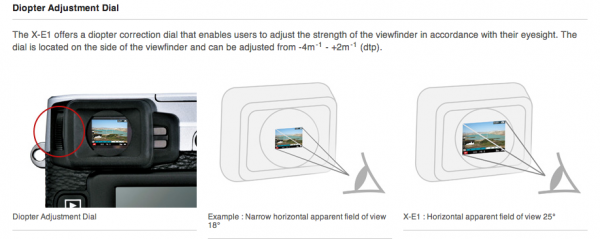
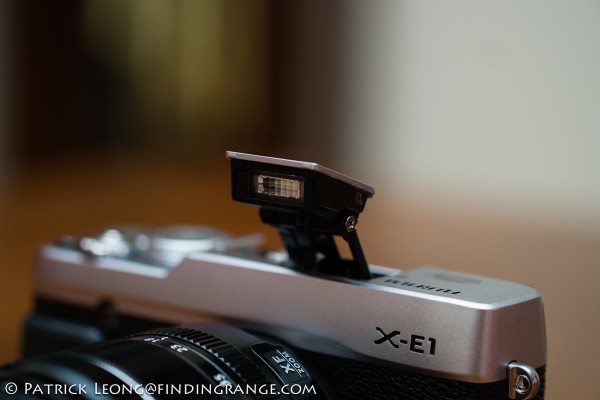
↑ Instead of the hybrid viewfinder of the X-Pro1, the X-E1 has a higher resolution EVF, and a pop up flash.
↑ Here is a shot taken at 800 ISO with the pop up flash.
The New EVF in the Fuji X-E1:
One of the biggest differences between the Fuji X-E1, and the X-Pro1 is that the X-E1 loses the hybrid viewfinder in favor of just an electronic viewfinder (EVF). For me, I prefer an OVF over an EVF. The lack of an OVF was one of the biggest reasons for why I wasn’t sure if I would like the X-E1. In my opinion, nothing beats the realism of an OVF.
However, The EVF on the X-E1 is a bit different than the one on the X-Pro1. The X-E1 has a 2.36 million dot resolution OLED viewfinder (definitely one of the highest today) versus the X-Pro1’s 1.44 million dot resolution LCD viewfinder. That’s a huge difference, and you can definitely see it. Quite frankly, it was enough for me to make the jump, and buy the X-E1. Plus, I figured that I would have the OVF from my X-Pro1, and my M cameras so I wasn’t too worried.
But even if I didn’t have the OVF’s from those other cameras, the Fuji X-E1‘s EVF is great to live with. I love it, and it works perfectly fine. When I go out shooting, I forget about it, which means that it has completely integrated with the way that I shoot. That’s what you want, right? If you keep thinking about it, then there’s got to be something bothering you but in my case, it works pretty seamlessly. I sometimes forget about it to the point where I’ll look through the viewfinder, and wonder why it’s dark. Then I remember that I have the lens cap on :).
But just like in any system, there are some downsides to the new viewfinder. For instance, when it’s darker, the viewfinder does lag a bit but it’s nothing major. For most, the EVF will be very satisfying, and they probably won’t miss the OVF.
Fuji X-E1 Image Quality:
Now, let’s just jump to what’s most important: the Fuji X-E1 image quality. Just like the X-Pro1, image quality is superb. The X-E1 also offers a wide dynamic range. Files come out so clean, bright, vivid, and crisp. I’ve been shooting with the X-Pro1 since the first day that it came out in the U.S., and I’m just blown away by what the X-Pro1 can produce. Seriously, BLOWN away. With the same 16 megapixel X-Trans sensor, the X-E1 is no exception. The only difference between the X-Pro1 and the X-E1 in this regard is now you can get the X-Pro1 image quality for 40% less with 30% less bulk! The X-Trans sensor has got to be the best APS-C sensor out there, and definitely one of the best sensors period, at least this is how I feel. I know many of you probably read in other places about how good this sensor is but seriously, I still get goosebumps sometimes :).

↑ Here’s a photo with the X-E1 and Zeiss Touit 32mm f1.8 combo.
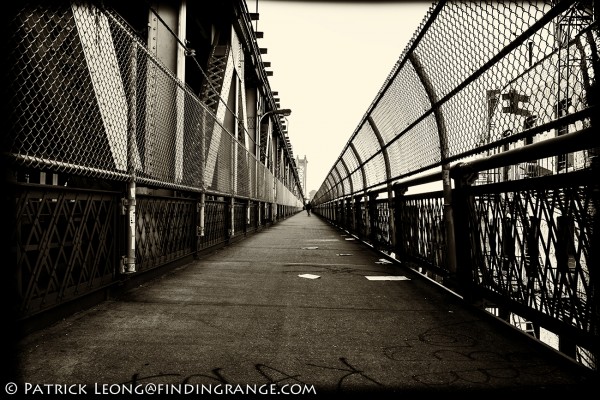
↑Photo taken with the X-E1, and XF 18-55mm F2.8-4 R lens.
↑ This photo was shot with the XF 35mm F1.4 R lens at 1000 ISO.
↑ Here’s another photo with the X-E1 and 18-55mm combo.
↑ Self Portrait with the X-E1 and kit zoom.
↑ X-E1/18-55mm combo on a tripod at 200 ISO.
Where does this amazing image quality come from? Well, that’s a secret the Fuji Guys probably know but I bet a lot of it comes from the wonderful lenses, and of course, the lack of an AA filter. I never had any major issues with moire with my M9, my X-Pro1 or in this case, my X-E1, so i welcome the lack of an AA filter, and also welcome the added resolution without one in place. Bottom line is if you’re in the market for a camera that can produce fantastic image quality, the Fuji X-E1 is probably your best bet in this class of camera. In fact, it’s probably your best bet in many classes above. Image quality definitely rivals full framed cameras, and many have traded in their full framed DSLR’s for an X-Pro1 or in this case, the X-E1 without any regrets. I seriously don’t believe anyone will be disappointed with what the X-E1 can deliver in terms of image quality.
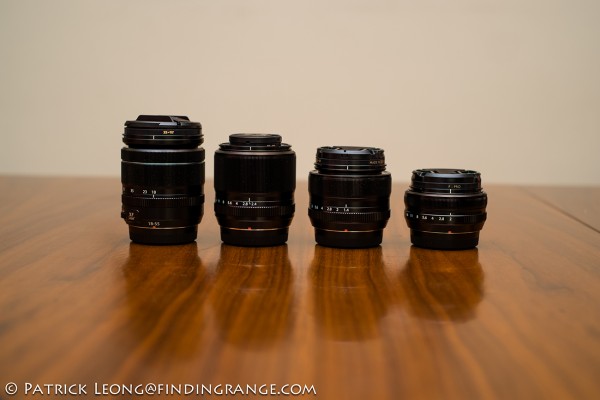
↑ From left to right: the XF 18-55mm F2.8-4 R lens, the XF 60mm F2.4 R Macro lens, the XF 35mm F1.4 R lens, and the XF 18mm F2.0 R lens. The XF 14mm F2.8 R lens should be available in the U.S. very soon.
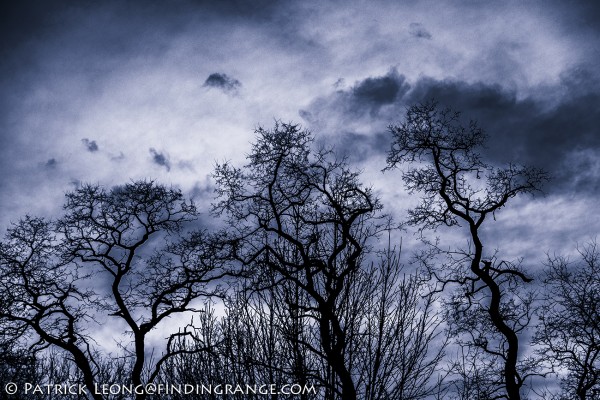
↑Photo taken with the XF 18-55mm F2.8-4 R lens.
↑ Here’s one more photo with the new Zeiss Touit 32mm f1.8.
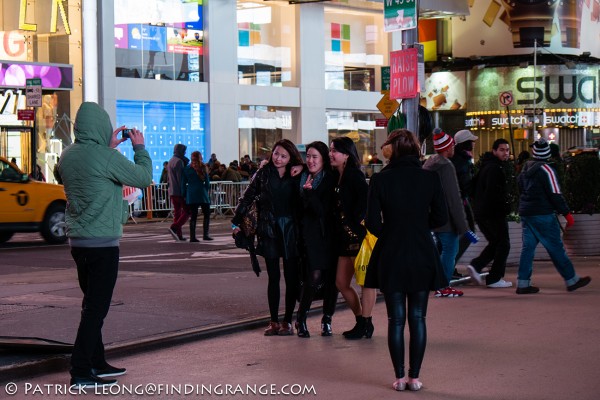 ↑ Another photo taken with the kit zoom at 1000 ISO.
↑ Another photo taken with the kit zoom at 1000 ISO.
↑ A view from above taken at 800 ISO with the kit zoom.
↑ I absolutely love the XF 18-55mm F2.8-4 R lens that came with my X-E1 kit. It’s very versatile, and I actually use it a lot more than I thought that I would. Here’s a shot taken at 200 ISO with the help of my tripod.
Fuji X-E1 High ISO:
What’s there to say about high ISO of the Fuji X-E1 other than it’s just as good as the X-Pro1? Well, let’s put it this way; feel free to crank this baby up to 2500 ISO because you really can with the X-E1. The range of 100-6400 ISO (extended range goes up to 25,600 iSO) is completely useable, which means that you can get the amazing image quality of the X-E1 in pretty much any kind of environment. There’s not much more to say on this topic other than you’ll be pretty happy with the results.
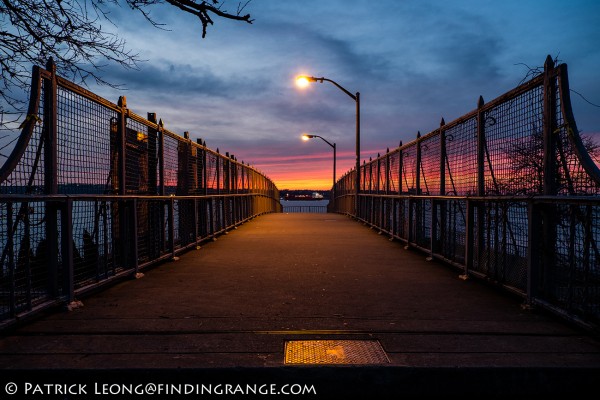
↑Photo taken with the XF 18-55mm F2.8-4 R lens, and X-E1 at 1250 ISO.
↑ Here’s a photo with the X-E1 set to 1000 ISO shot with the kit zoom.
↑ A shot taken at 800 ISO through a dirty window.
↑ I set the X-E1 to 2000 ISO for this shot using the XF 18-55mm F2.8-4 R lens.
↑ Here a shot taken at 1600 ISO with the XF 35mm F1.4 R lens.
Fuji X-E1 Jpeg Quality:
Just like the X-Pro1, the Fuji X-E1 has some seriously high quality jpegs. It’s hard to see the true quality of any photograph on the web but in all seriousness, the jpegs coming out of the X-E1 are some of the best out of camera jpegs that I have ever seen, and this is coming from a person who shoots exclusively in RAW.
White balance is good, the details are nice, and the beautifully vivid colors can be incredible at times. I always ask myself, “how are the colors so good all the time?” I was a big fan of Velvia back in my film days, and apparently, I’m a big fan of Velvia on my Fuji X-E1 because it just looks awesome :).
If you’re just jumping into the mirrorless scene, or you’re a film guy who wants to jump into digital, and you don’t want to fiddle with programs like Photoshop, the X-E1 is perfect for you because the jpegs are really that good.
Fuji X-E1 Simulation Modes:
If you decide to just shoot in jpeg, you have a really nice variety of film modes to choose from. Here are some sample films options (jpegs straight out of the camera) shot with the XF 35mm F1.4 R lens at F5.6 with the pop up flash that you can choose from:

↑ Provia/Standard

↑ Velvia/Vivid
↑ Astia/Soft
↑ PRO Neg. Hi
↑ PRO Neg. Standard
↑ MONOCHROME
↑ MONOCHROME+Ye FILTER
↑ MONOCHROME+R FILTER
↑ MONOCHROME+G FILTER
↑ SEPIA
Fuji X-E1 Focusing Issues:
Overall, the X-E1 is a pretty amazing camera but I bet many of you are wondering how the autofocus performs. Well, I find that the autofocus speed on the X-E1 is plenty fast enough for me, especially with the new zoom mounted to it. The XF 18-55mm F2.8-4 R lens is very quick, and in my opinion, it’s a lot faster, and more accurate than any of the other lenses. However, it should be said that the X-E1 will not give you the autofocus speed of something like the Olympus OM-D. But does that mean it’s terrible? No. The OM-D has a really great autofocus system, and again, the X-E1 offers an autofocus system that is plenty fast. I honestly have no complaints with it.
For the most part, I also find that the autofocus is pretty accurate accept for certain situations, such as, shooting in very dimly lit areas. Then there’s a bit more searching, and once in a while, an inability for the X-E1 to lock on to its target. But again, it’s not a big issue because for the most part, I always get the shot that I want.
Fuji X-E1 Pro’s and Con’s:
Here’s a quick summary of what I think are the pro’s and con’s of the Fuji X-E1.
Pro’s of the Fuji X-E1:
- Wonderfully fantastic image quality!
- Fantastic jpegs.
- X-Pro1 image quality, and functions for under $1000!
- Great high ISO capability.
- Excellent build quality.
- Fantastic choice of lenses.
- More lenses coming from Fuji, and other manufacturers, such as, Zeiss.
- At just 350 g, this camera can easily be carried around all day.
- EVF is excellent, and many will not miss the OVF.
- The X-E1 is a beautiful looking camera.
- The X-E1 is stealthy, and small making it extremely comfortable to use.
- The X-E1 is a great camera for discreet shooting.
- Full manual controls on the body, and the lenses.
- For many, it’ll be hard to justify spending more for the X-Pro1.
- Autofocus is fast especially with the new XF 18-55mm F2.8-4 R lens.
Con’s of the Fuji X-E1:
- Just like the X100, and the X-Pro1, the exposure compensation dial is too easily moved accidentally.
- When it’s dark, there is a little lag in the EVF.
- For some, the resolution of the LCD is not high enough.
- Autofocus is fast and accurate but still not quite as fast or accurate as a couple of it’s competitors.
- Inability to set the minimum shutter speed in Auto ISO.
Fuji X-E1 Final Thoughts:
The only thing I have left to say is go out, and buy the Fuji X-E1. This is one of those cameras where you really, REALLY get your money’s worth. The X-E1 is a fantastic little camera, and priced very reasonably allowing many, many photographers out there to easily obtain stellar image quality for not put yourself “in the dog house” price. But it doesn’t just stop at excellent image quality.
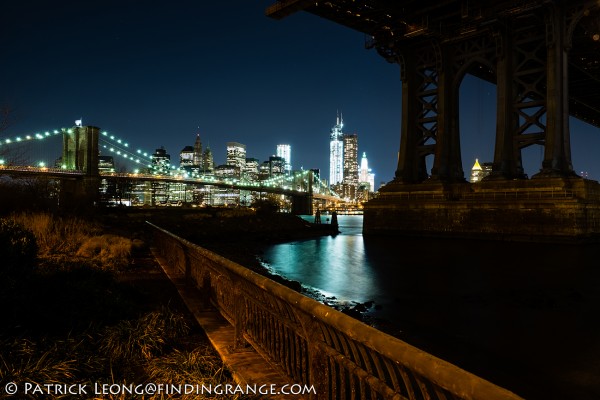
↑ Here’s another shot with the X-E1 and kit zoom combo on a tripod taken at 200 ISO.
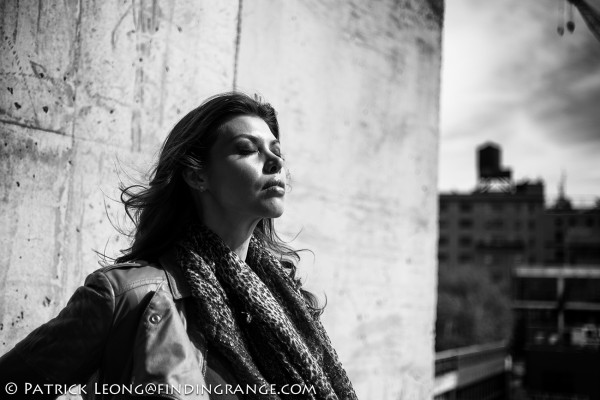
↑ One last shot with the Zeiss Touit 32mm f1.8.
The X-E1 has full manual controls, and it really is one of those cameras that will take you back to a much more raw, and simpler time in photography. It takes you back to the basics. It’s a camera that really puts more decisions back into the hands of the photographer, which I personally find lacking these days. The Fuji X-E1 might not have all of the technical wizardry of say, the OM-D, but it doesn’t need it nor do many of it’s potential buyers care for it. The X-E1 is not about the electronics; let’s be honest, the OM-D’s video capability is definitely better than the X-E1’s. But who cares because when you buy something like an X-E1, it’s more about the photography, and being as simple as possible to allow more freedom for personal creativity. In fact, I haven’t even used the video feature on the X-E1 because I bought it purely to shoot photos. That’s not to say that the OM-D doesn’t allow a photographer to be creative; I love the OM-D! It’s just that one should not look at the X-E1’s lack of electronic wizardry as a bad thing; on the contrary, it’s what liberates the camera, and therefore, it is probably the closest anyone will get to an M9 or even the new Leica M for under $1,000.
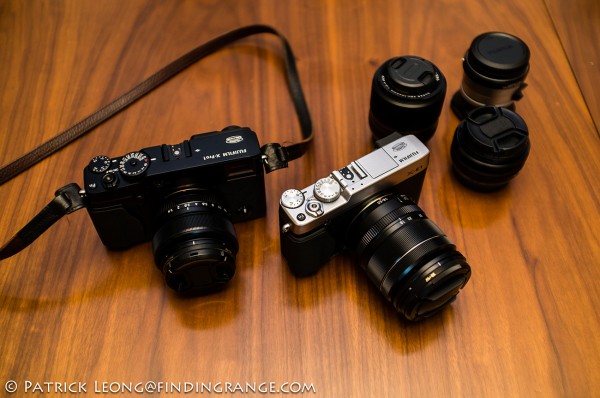
The X Series interchangeable system so far from left to right: Fuji X-Pro1 with XF 18mm F2.0 R lens mounted, Fuji X-E1 with XF 18-55mm F2.8-4 R lens mounted, XF 60mm F2.4 Macro R lens, XF 35mm F1.4 R lens, and the Fujifilm M Mount Lens Adapter.
Just like the X-Pro1 or even the M9, you buy the Fuji X-E1 because it’s a camera that concentrates on the pure essentials for great photography. You get full manual controls, rangefinder-like experience, portability, excellent build quality, fantastic lenses, and of course, incredible image quality thanks to the wonderful X-Trans sensor, which basically levels the playing field with its competition. The X-E1 is a camera designed for someone who truly loves photography, and wants to get fully involved in the creative process of a photo. The X-E1 really makes you think of a shot before you shoot it, and I think that’s something missing sometimes in digital cameras these days. It makes you feel more connected to what you’re shooting. If all of this describes you, then you have found your dream camera, which can be had for under $1,000. In my opinion, that’s not much to pay for a dream to come true.
That’s it for this review, I hoped that you all thoroughly enjoyed it. Please stay tuned for more comparisons, and mini reviews of the Fuji X-E1 coming soon. Comments below are always welcomed. Thanks for stopping by!
If you’re considering buying the Fuji X-E1, and my review helped you decide, please help support me by purchasing from one of the links below. Thank you for your support!
Fuji X-E1 Body in Silver From Amazon
Fuji X-E1 Body in Black From Amazon
Fuji X-E1 With Kit Zoom in Silver From Amazon
Fuji X-E1 With Kit Zoom in Black From Amazon

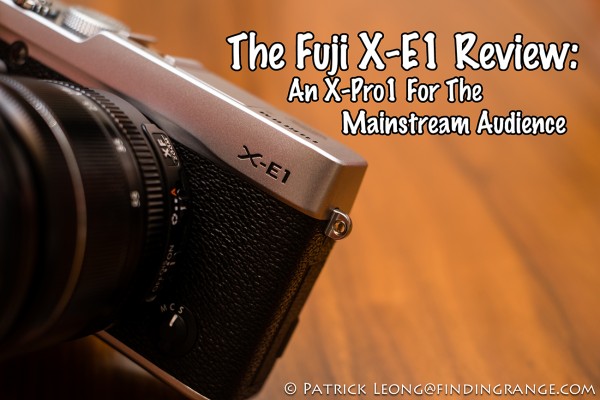

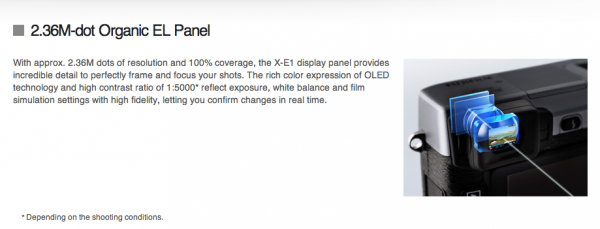
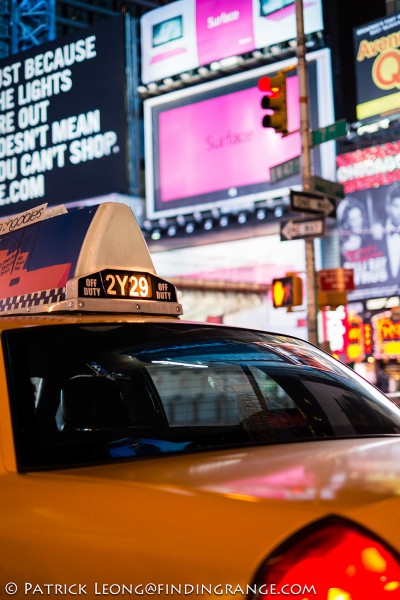
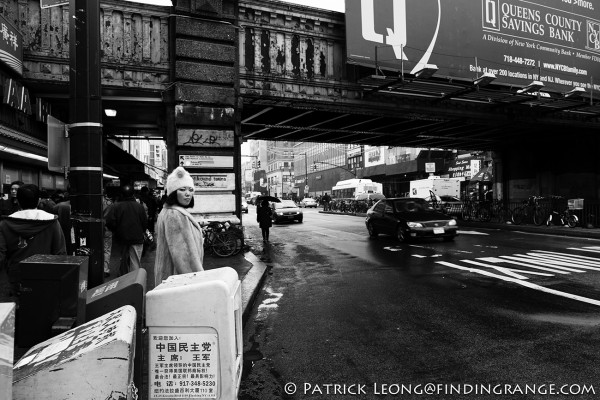
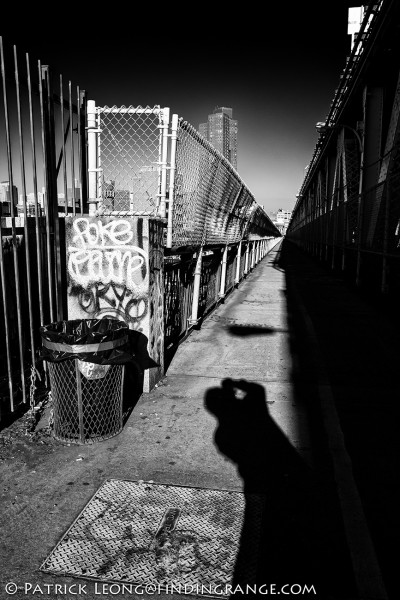
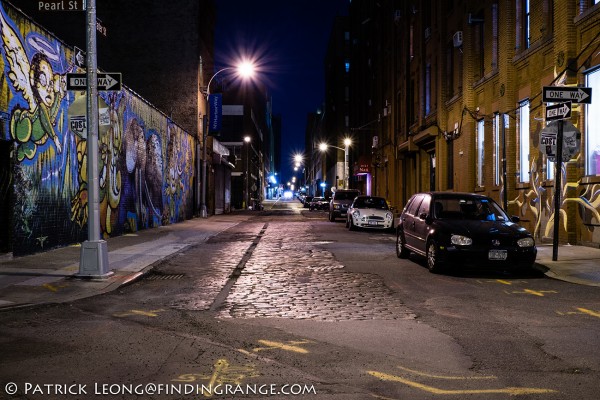
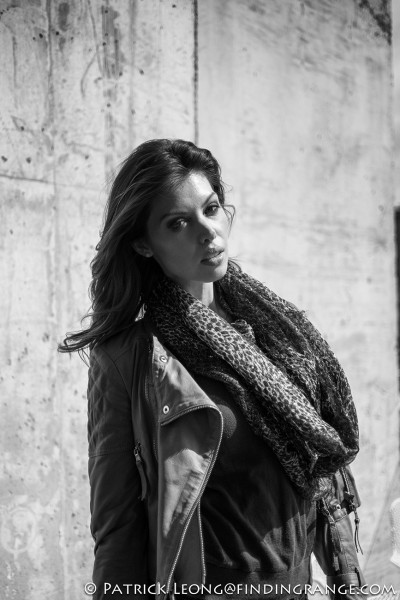
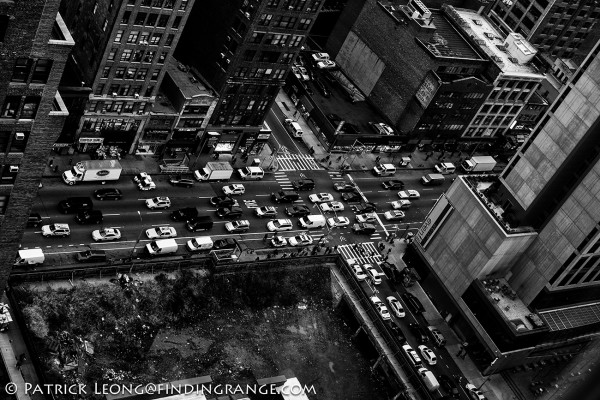
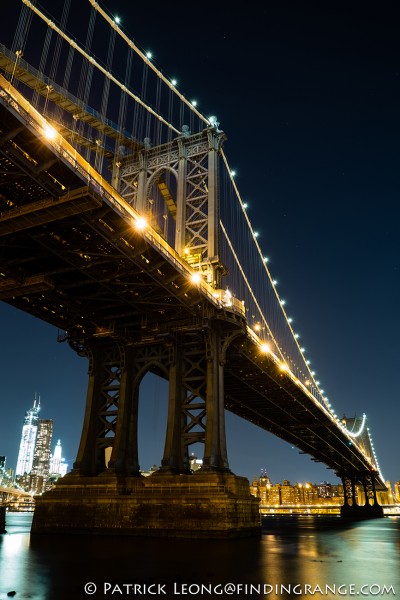

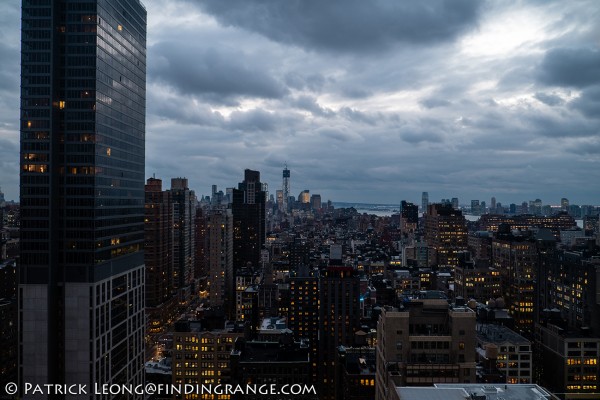
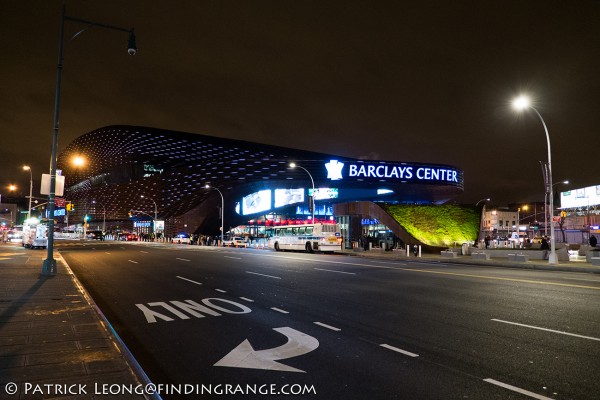
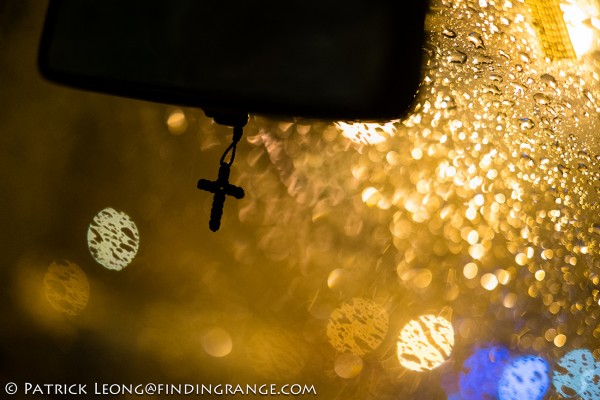



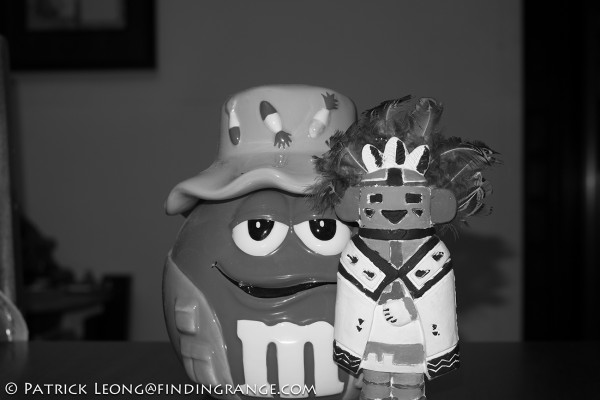
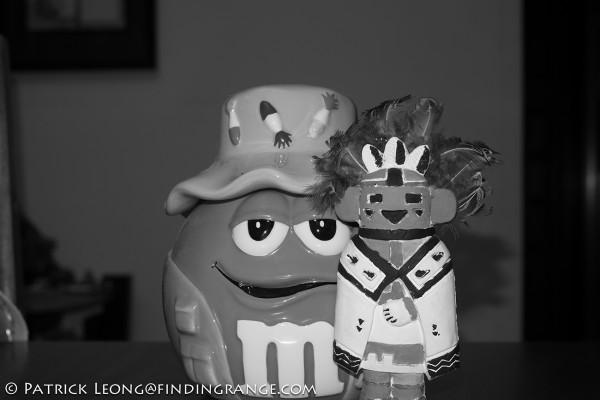
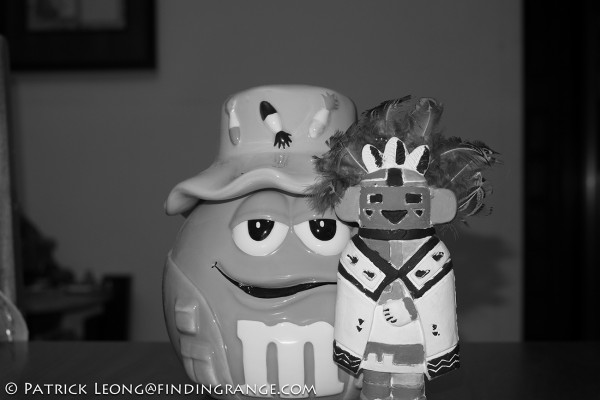
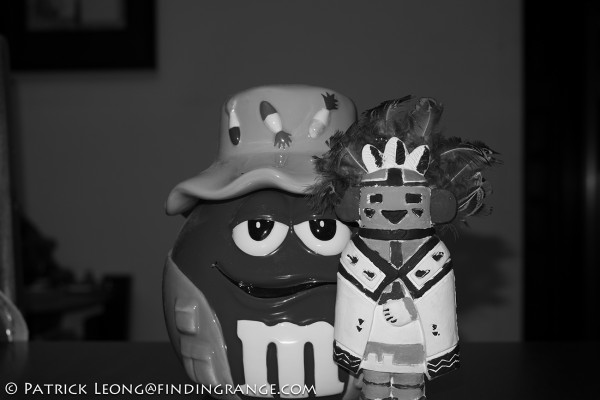

Hi Patrick,
What a great review on the so awesome X-E1. I myself own the X-Pro1 and took this to New York just last August.
You might want to take a look at my blog to see some pictures of what seems to be your home town.
Anyway, thanks for this great review which makes me want the X-E1 even more.
I am seriously thinking about swapping my X-Pro1 for the X-E1 as I like the smaller size.
Please keep up the great pictures.
Greetings from Germany
Daniel
Hi Daniel,
Thanks for the comment! It’s much appreciated. I love my X-Pro1 but I do prefer the size of the X-E1. It really works just as good as the X-Pro1 but in a smaller package.
I went to your site, and I saw I think most of your photos. They are awesome! It’s funny when I see other photos of Little Italy, Chinatown or Times Square because I always think to myself, “what a small world!” It’s very cool.
Thank you for visiting my site, and feel free to let me know if you do decide to get the X-E1. I’m just curious. Take care!
We are breathing the same air, I totally agree with your coments, I like my X Pro1 images more than my Nikon D600, the best with the AF is it can tell you right away when a subject is not in focus, instead, for other cameras, doing hunting all the time when the image is not in foucs.
Hey Chris,
Thanks for your comment! Yeah, Fuji is really coming out with some cool stuff, and I’m glad about that because they use to have some cool medium format cameras back in the day. What’s great is that other manufacturers like Zeiss are also seeing the potential of the XF format. I can’t wait to see some of those Zeiss lenses soon. Thanks for stopping by!
I have bought four adapters for my X Pro1, now I can play with my old Leica lenses, new or old Nikon lenses, old Minolta MD lenses, old 16mm movie lenses and old Schneidner lens, I have a lot of funs on X Pro1 instead of restricted to one kind. Looking forward to see more lenses.
Wow, I only bought the M adapter so far. That’s very cool, Chris. I’m curious, how does the old Schneider lens perform?
Great review.
Having used the X10 over the past year, I decided to make the leap and get the XE-1. My Nikon D300s with 18/200 VRII had been redundant most of the year sitting in a draw at home whilst the X10 went everywhere with me including work. I sell cameras at work so the X10 when shown some of the images I took with it, convinced a lot of photographers and amateurs to commit themselves to one. I thought about the XPro-1 when it came out but I asked myself what were the reasons I liked about the X10, the first was the image quality (it’s almost impossible to take a bad picture!) secondly, the size. And so I held off. Then the XE-1 arrived. I did take a fancy to the OMD initially as I started off with an OM-1 back in the 80’s and had asked the distributor to come back to me with a staff price for a kit. As I waited to hear back from the Olympus agents, I began to have a play with the XE-1 more and more which ultimately proved to be the OMD’s undoing. Now I’m loving using the XE-1 and will be eagerly waiting on their 14mm and perhaps 55/200mm to arrive. In the meantime I am seriously considering the 35mm/f1.4.
Bottom line…………Photography has become enjoyable and exciting again.
Hi John,
Thank you for the comment! The X10 is an awesome camera! I had it on loan for a review, and I was so impressed with what it could do. I didn’t want to return it! My brother in-law knows a concert photographer who uses an X10 for his personal use. Also, the X-E1 is the perfect size in my opinion. The beauty of it is that it shoots just as well as the X-Pro1. I was actually considering the OM-D as well but I love the X-Pro1 image quality, and I thought it would make more sense to purchase the X-E1 because I could use my existing XF lenses. I’m glad I did because quite honestly, I think I’m beginning to like my X-E1 more than my X-Pro1. You’re right too. These cameras bring back the enjoyment in photography. I love the sheer analog feel of these cameras.
The 14mm definitely sounds like an awesome lens. I’m also curious about the new Zeiss 12mm that I think is coming out soon, isn’t it? If you’re considering a 50mm equivalent, you should definitely get the 35mm 1.4. It’s seriously one of my favorite all time lenses. I’m also waiting to see how the wide angle zoom is going to be like although I think that’s a bit farther down the road. I seriously love the Fuji stuff that’s coming out these days.
Bonjour Patrick,
Bravo pour vos commentaires sur le XE-1. Je possède le X-PRO et j’ai la même opinion que vous concernant les boîtiers X de Fuji. Le XE-1 me plairait bien comme deuxième boitier avec le 23mm qui sortira sous peu. J’ai actuellement le 35mm monté sur le Pro. Je suis d’accord avec vous sur le fait que l’on aborde la prise d’une photo de façon différente avec ces boîtiers. La prise est plus réfléchie, on se concentre plus sur le cadrage, l’exposition etc…
Au plaisir de vous relire.
Gil (France).
Bonjour Gil,
Merci pour le commentaire! Mon lycée français est rouillé, donc je suis en utilisant Google translate. Le X-E1 serait un excellent choix comme un second corps, surtout avec le nouveau 23mm qui sort. Et oui, ces caméras vraiment ramener la joie dans la photographie, car on doit utiliser une approche différente pour prendre des photos. J’aime beaucoup la prise de vue avec eux. Je pense vraiment que Fuji a fait des progrès énormes dans le monde sans miroir. Je ne peux pas attendre de voir comment leurs nouvelles lentilles effectuer. Merci pour votre visite, et j’espère que la traduction a marché!
How do you feel the X-Trans equipped cameras compare to the M9?
I’ve seen comparisons on-line where 100 people couldn’t tell the difference.
I too have been shooting the X-Pro 1 since day one in the US.
I too added the XE-1 to get the zoom, but it’s not without issues on the X-Pro1 using the OVF. If you shoot a zoom by adjusting with your left hand, you’ll find it blocks the viewfinder. Also the frame lines need to be adjusted by hand (holding the lever for 3s) between extremes of the zoom range, so it’s not exactly a seamless user experience 🙁
I too much prefer the OVF, but I’m keeping the XE-1 around for stealth street work with the 18mm and for night time shooting, where the OVF isn’t much use anyway.
I’m on my last lens attempt to get similar IQ from my Canon 5D MK3, having bought or borrowed almost all the stars of the L range as well as Zeiss and lately the new Sigma 35mm F/1.4 – none of them can touch the X IQ in my opinion 🙁
I have the new 24-70 zoom arriving in a day or two, if that doesn’t cut it, the whole kit will be going on Ebay and I’ll be either buying a D800E or the new Leica M.
ET
Hi Colin,
Thanks for your comment! I was disappointed with my M9 near the end (cracked sensor, calibration problems) but in my opinion, the M9 files are still better than the X-Trans files. High ISO is better with the X-Trans, and it is definitely sharp but I still can’t get the files to quite look like my M9 files even with the M adapter. It’s hard to compare anything online. But again, the M9 list price was $6995, and the X-E1’s list is $999. Now is the M9 $6,000 better? No. But it’s enough that I ended up trading my M9 to upgrade to the new Leica M.
You know, you’re not the only one who has told me that they traded in their 5D Mark III for one of the X-Trans cameras. Go Fuji lol. There are a few people out there that are still hoping Fuji will come out with a full framed X-Trans sensor, and I think that it would be great to have but their crop sensor now is awesome, and it’s kicking butt. Right now, I’m more interested in some of the new lenses that are coming out, such as, the Zeiss ones.
Yeah, the D800E is definitely tempting. I almost bought it instead of pre-ordering the new M but I hate to say that I just love the Leica files. Besides the wonderful files, and the awesome lenses, nothing quite feels like a Leica M. If you want the most non-digital digital camera, I really think you have to buy an M. That’s just my opinion. Thanks again for your comment! Take care!
Patrick
I have the XE1 and like the 18-55 but it’s not long enough so with my Novaflex I mount a Canon 35-105 f 3.5 or 135 f 2.8 Darn sharp lenses and other then time it takes to MF if not at infinity their FUN to shoot with.
Hi Scott,
Thanks for your comment! Wow, really cool man. I’d be interested in seeing some of those photos with the Canon lenses mounted. I completely agree with you: Very sharp lenses that are great to shoot with (but a little difficult to focus with in MF). Fuji is on a roll, and by the looks of it (the X100S and the X20), they don’t seem to be stopping. Take care, thanks for checking out my user review!
Привет Патрик.
Патрик, можно вас попросить скинуть мне пару снимков в полном разрешении разными камерами X-Pro1 и X-E1, объективом 18-55мм F/2-4 Хочу убедиться на сколько будет разница в деталях снимка.
http://www.panoramio.com/user/4925131?show=all часть снимков которые я помещаю на данном сайте – в полном разрешении.
С уважением,
Виктор